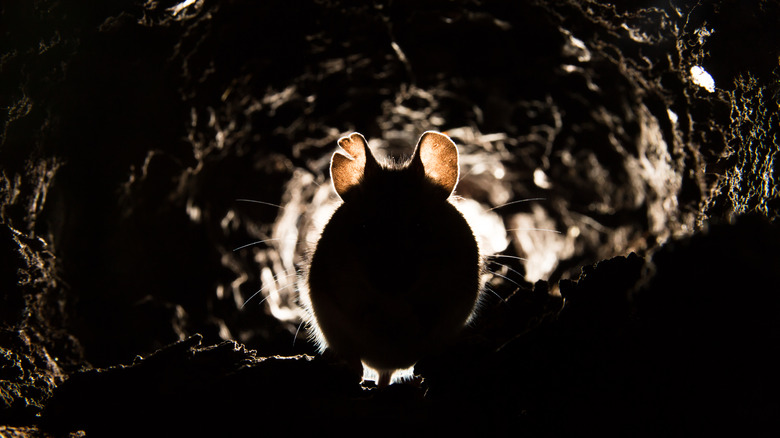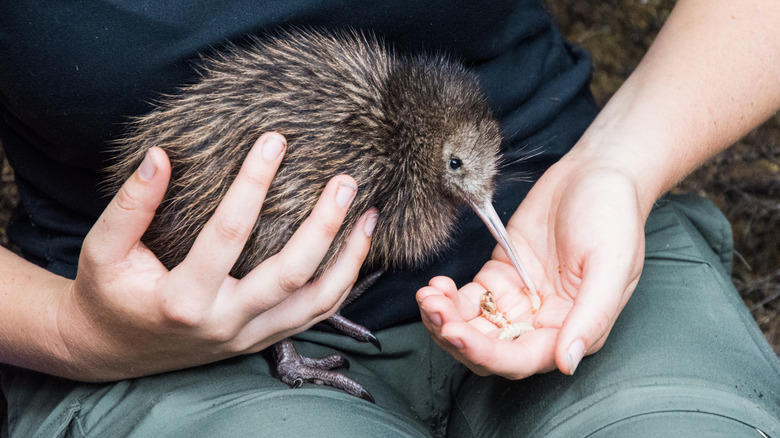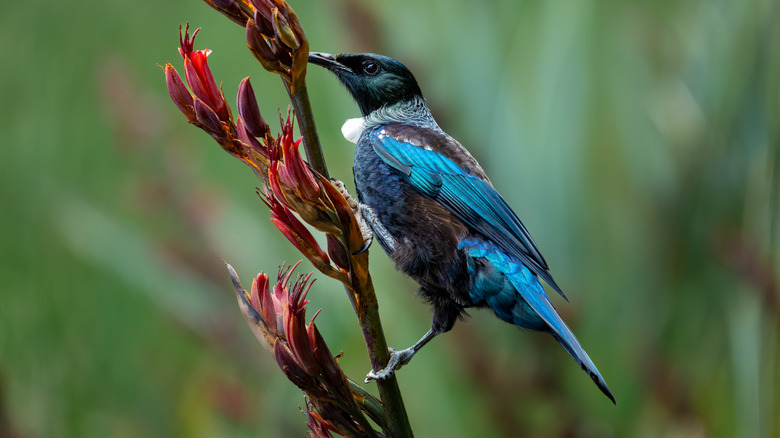Inside New Zealand's Quest To Exterminate All Rats
Certain animals tend to draw ire more than others, particularly those that prove a nuisance to human endeavors. Racoons are adorable and resourceful, but lots of people despise them because they get into garbage. Pigeons make the hate list for pooping everywhere, and starlings for messing with agriculture. Some folks even hate wild bunnies for eating all their tomato plants, which is sad but understandable. But more than any other critter, rats seem to provoke serious responses of disgust. Yes, some folks keep them as pets and think they're cute. But by and large rats are associated with uncleanliness, disease, and annoyance. And in New Zealand, they've made the most-despised list for another reason entirely: depleting indigenous bird populations.
See, New Zealand broke away from Australia a long, long time. Eighty million years ago, in fact, as Visit Zealandia says. One-hundred and seventy million years ago New Zealand was a part of modern-day South America. From 80 million to 60 million years ago New Zealand drifted into its current location. In other words, New Zealand's wildlife was isolated for quite some time. Many of its birds — like the nation's mascot, the thin-beaked kiwi — are flightless, and had no natural land predators until the nation's first Polynesian settlers arrived 700 to 800 years ago, per the BBC. These settlers brought with them a familiar pest: rats. Since then, the rat population has annihilated defenseless birds like the kiwi. Now the New Zealand government wants its rats dead.
Swarming over defenseless kiwis
Seven to eight-hundred years isn't exactly long enough for kiwis to develop some wings — not when New Zealand sat predator-free for 80 million years. While the country's original Polynesian settlers were responsible for bringing rats with them, additional rat species like the Norway rat arrived in the late 18th century on ships from Europe. Add to this even more rat species, stoats, weasels, ferrets, possums, and you've got the beginning of serious threats not just to kiwis but also to other native birds like the beautiful blue tui. Back in 2016 the Great Barrier Island Trust calculated that 26 million members of native bird species were killed every year from land-based, mammalian predators. If those predators had evolved lockstep with other New Zealand species things would be much more balanced.
Folks started raising the rodential alarm as far back as the 1960s. Back then, conservationists successfully exterminated rats from some of New Zealand's small islands, but not its two main islands: North Island and South Island. Conservation efforts really took off within the past two decades following the development of infrared technology. Infrared footage allowed conservationists to spot a big — but small-sized — problem they hadn't noticed before: rats tearing through bird eggs and bird chicks. Now New Zealand's rat problem is so bad that it's actually rare for birds like the kiwi to survive past chickhood without human intervention and protection. Many birds are kept protected inside sanctuaries.
Predator-free by 2050?
Animal sanctuaries protect species like kiwis and tuis not because they keep predators out, but because they restrict the space that conservationists need to check for trouble. As the BBC explains, keeping sanctuaries pest-free is a relentless task. There are cameras eyeing sanctuary grounds, ink pads to help track predators like weasels, alarm systems triggered by perimeter breaches, traps laid out for intruders, special pest-tracking dogs that prowl facilities, and more. There are even celebrity dog pest catchers like Detector Gadget, who has her own Facebook page. Large-scale volunteer outfits like Sircet have gotten involved to control pests and reintroduce endangered species into environments, as have regional non-profits like Predator Free Wellington and publicly funded operations like Predator Free 2050. As the final name implies, the New Zealand government is looking to exterminate all invasive predators by 2050.
While protecting indigenous species is necessary and laudable, it can also come across as brutal and heartless. On the BBC, conservationist Wayne Linklater called the predator-free measure not only cruel, but futile, pointing to failed past campaigns against other non-native species like deer and rabbits. And then of course there's the ever-present irony of humanity — Earth's most savagely destructive, habitat-marauding species — calling for conservation of the natural world. Another biologist, James Russell, shrugs at the 2050 deadline and calls the initiative an "unambitious, business-as-usual model." No matter the ultimate outcome, we're pretty sure that all those involved won't be stopping anytime soon.


